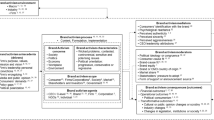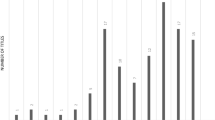Abstract
This paper examines the potential for the Baltic Sea Region (BSR) to create and maintain a brand. Providing an initial and overall look at the issue, it poses the question: Can a region with ten countries really successfully engage in brand-building? This question is tackled by building upon the literature on branding and place branding, but also by drawing upon research on the region conducted in social science disciplines such as economic geography, history and cultural history. Empirical sources included interviews and observing conferences and presentations. This study argues that the BSR faces a number of challenges, as suggested by place-branding theory, the most notable being a lack of one single decision-making authority and a lack of unity of purpose among its potential stakeholders. Two possible and somewhat similar strategies that take these challenges into account are presented. It might be possible to compensate for the lack of decision-making authority, but it would take a strong unity of purpose in terms of a unifying core idea or brand story. The kind of unifying element that is needed might be that the region possesses a common identity to some degree or have strong joint interests. A swift review of whether this is the case indicates that a region is indeed being formed, but as yet, it is too early to speak of a coherent region with a common identity, at least in the traditional sense.
Similar content being viewed by others
Notes
Organisers: Baltic Development Forum and VINNOVA; strategic partners: Council of Baltic Sea States (CBSS), Nordic Council of Ministers and Baltic Sea States Subregional Cooperation (BSSSC).
‘Informal Colloquium on Branding the Baltic Sea Region’, 2005, Co-arrangement between Konrad Adenauer Stiftung, Baltic Development Forum and VINNOVA.
Typically, trade is considered as the first step in a process of building up economic relations between markets, and FDI is considered as a process indicating closer integration.
The compilation of cooperation efforts in the Baltic Sea Region showed that out of 190 initiatives, agreements and organisations promoting cooperation, 77 were more or less focused on economic issues (Stålvant, 1996).
References
Aaker, D. A. (1996)‘Building Strong Brands’, The Free Press, New York, NY.
Anholt, S. (2005)‘Post-Cadenabbia thoughts’, paper from author, received 5th May, 2005.
BCCA (2002)‘1992 to 2002: Economic Cooperation, Region Building and Old New Friendships Around the Baltic Sea’, BCCA, Kiel, Germany.
Caldwell, N. and Freire, J. R. (2004)‘The differences between branding a country, a region, and a city: Applying the Brand Box Model’, Journal of Brand Management, Vol.12, No.1, pp.50–61.
Cornett, A. P. (2003)‘Regional perspectives on integration in the Baltic Sea Region’, in Dosenrode, S. and Halkier, H. (eds)‘The Nordic Regions and the European Union’, Ashgate, Hampshire, UK, pp.115–138.
Ellemann-Jensen, U. (2002)‘We all stand to win from the true partnership in the Baltic Sea Region’, in BCCA (ed) ‘1992 to 2002: Economic Cooperation, Region Building and Old New Friendships around the Baltic Sea’, BCCA, Kiel, Germany, pp.33–37.
Fan, Y. (2006)‘Branding the nation: What is being branded?’Journal of Vacation Marketing, Vol.12, No.1, pp.5–14.
Frost, R. (2004)‘Mapping a Country's Future’, available at www.brandchannel.com/features_effect.asp?pf_id=206, viewed 5th February, 2005.
Gerner, K. (2001)‘History’, in Macijewski, W. (ed) ‘The Baltic Sea Region — Culture–Societies–Politics’, Baltic University Programme Teacher's Seminar, Conference edition, pp.19–59.
Hankinson, G. (2001)‘Location branding: A study of the branding practices of 12 English cities’, Journal of Brand Management, Vol.9, No.2, pp.127–142.
Hettne, B., Inotai, A. and Sunkel, O., (eds) (1999)‘Globalism and the New Regionalism’, Macmillan, Basingstoke, UK.
Kavaratzis, M. (2004)‘From city marketing to city branding: Towards a theoretical framework for developing city brands’, Place Branding, Vol.1, No.1, pp.36–49.
Kotler, P. and Gertner, D. (2002)‘Country as brand, product, and beyond: A place marketing and brand management perspective’, Journal of Brand Management, Vol.9, No.4–5, pp.249–261.
Larsen, M. R., inBSSSC (2000)‘Baltic Sea Cooperation Beyond 2000 — Visions and Strategies on the Local and Regional Level, available at www.bsssc.com/section.asp?id=170&pid=83, viewed 5th May, 2005.
Larsson, L. -O., in Kreslins, J. Mansbach, S. A. and Schweitzer, R. (2003)‘Gränsländer —Östersjön i ny gestalt’, Daleke Grafiska, Malmö, Sweden.
Nilsson, J. H. (2003)‘Östersjöområdet — Studier av interaktion och barriärer’, Sisyfos Förlag, Motala, Sweden.
Nworah, U. (2005)‘Nigeria as a Brand. http://www.brandchannel.com/papers_review.asp?sp_id=604, viewed 5th May, 2005.
Olins, W. (1999)‘Trading Identities: Why Countries and Companies Are Taking On Each Others’ Roles’, Foreign Policy Centre, London, UK.
Olins, W. (2005)Presentation Observed at Informal Colloquium on Branding the Baltic Sea Region, Cadenabbia, Italy, 29 April–1 May.
Papadopoulos, N. (2004)‘Place branding: Evolution, meaning and implications’, Place Branding, Vol.1, No.1, pp.36–49.
Rainisto, S. (2003)‘Success factors of place marketing: A study of place marketing practices in Northern Europe and the United States’, Doctoral dissertation, Helsinki University of Technology, Institute of Strategy and International Business, Helsinki, Finland http://lib.tkk.fi/Diss/2003/isbn9512266849/, viewed 10th February, 2005.
Stålvant, C. -E. (1996)‘Cooperation in the Baltic Sea Region — An Inventory of Infrastructures: Initiatives, Agreements and Actors’, Ministry of Foreign Affairs, Stockholm, Sweden.
Supphellen, M. (2005)Professor, Department of Strategy and Management, Norwegian School of Economics and Business Administration, Telephone interview, 25th May, 2005.
Törnqvist, G. (1996)‘Sverige i nätverkens Europa. Gränsövers-kridandets former och villkor, Liber Hermods’, Malmö, Sweden.
Presentations and discussions (all observed at the ‘Informal Colloquium on Branding the Baltic Sea Region’ in Cadenabbia, Italy, 29th April–1st May)
Anholt, S., Government Adviser, Managing Editor, Author.
Kalnins, O., Director, Latvian Institute, former Latvian Ambassador to the US.
Ketels, C., Principal Associate Institute for Strategy and Competitiveness, Harvard Business School and Institute of International Business, Stockholm School of Economics.
Olins, W., Chairman Saffron Brand Consultants, Author, Visiting Fellow at Said Business School in Oxford and Visiting Professor at Lancaster University and Copenhagen Business School.
Interviewees, pre-study:
Gruodis, V., Director General, Baltic Management Institute, former Director of the Lithianian Development Agency, Telephone interview 25th May, 2005.
Kalnins, O., Ambassador, Director, Latvian Institute, Telephone interview 14th March, 2005.
Kokkonen, E., Director, the Baltic Institute of Finland, Telephone interview 30th May, 2005.
Lindberg, P., Policy Manager, Baltic Sea Chamber of Commerce Association (BCCA), Telephone interview 31st March, 2005.
Mielke, T., Director Baltic Sea Tourism Commission (BTC), Telephone interview 11th April, 2005.
Musiolik, S., Director Department of Nordic and Baltic Sea cooperation, Schleswig-Holstein State-Chancellery, Telephone interview 11th April, 2005.
Nilsson Speer, D., Baltic Design Transfer, Telephone interview 16th March, 2005.
Pikani, J., Vice President ScanBalt, Chairman Estonian Biotech Association, Interviewed in Copenhagen 15th March, 2005.
Saprykin, P., Policy Advisor, Council of Baltic Sea States (CBSS), Telephone interview 1st April, 2005.
Author information
Authors and Affiliations
Corresponding author
Additional information
1graduated from Stockholm School of Business in June 2005 with an MSc in Business and Economics and has an MA in Political Science from Uppsala University. He is currently doing in-service training at the European Commission in Brussels, and has previously worked for the Baltic Development Forum in Copenhagen, among other things, on a project aimed at building a brand for the Baltic Sea Region.
Rights and permissions
About this article
Cite this article
Andersson, M. Region branding: The case of the Baltic Sea Region. Place Brand Public Dipl 3, 120–130 (2007). https://doi.org/10.1057/palgrave.pb.6000057
Received:
Revised:
Published:
Issue Date:
DOI: https://doi.org/10.1057/palgrave.pb.6000057




